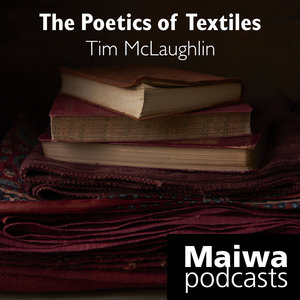Previously we gave a little overview of some of the factors influencing rising cochineal prices. Like all crops, cochineal prices depend on supply and demand, with a number of complicated forces at work: Large buyers trying to keep the price low, farmers wanting a better return, unexpected demand from changes in the market. Not to mention all the usual forces that shape the harvest; weather, disease, pests and disasters.
For anyone who's life was caught up in the agricultural production of colour it must have seemed like a pipe dream to discover that you could simply "make" a colour. No harvesting, no plantations, no labour disputes, no drying, extracting, or storage problems.
Enter our man William Henry Perkins. It is 1856. He is a young chemistry student working in a makeshift laboratory in his flat. Little more than a table and some beakers. He is trying to get to quinine - very useful in combating malaria in the British Empire's tropical colonies. The process fails but does yield some interesting colours in the beaker.
In his history of Perkins, Mauve: How One Man Invented a Color That Changed the World, Simon Garfield notes that a less curious man would have thrown the failed experiment away in disgust or disappointment.
Perkins investigated further and the chemical dye industry was born. The first synthetic colour was, quite remarkably, one of the most difficult to make from natural substances. It was close to imperial or tyrian purple (a shellfish dye). It was also close to logwood, but much more saturated.
The dress at the top of the post was made around 1862. It clearly shows the new synthetic colour. It is not difficult to imagine the sensation that it would have caused in the textile industry. The industrial revolution had already changed the production of cloth, now it was poised to change forever the way that cloth was coloured.
Maiwa is well known as an enthusiastic proponent of natural dyes. So why are we talking about synthetic colour? For two reasons: First, Perkin's discovery puts an exact date on the first use of synthetic colour. Everything before 1856 was dyed naturally. Some critics of natural dyes claim that it is the very nature of natural dyes to give timid shades that live short lives. A visit to any textile collection or museum confirms that this is simply not true. The classic example of the longevity of natural dyes are tapestries and carpets.
There is a second reason to be familiar with the history of synthetic dyes. Although synthetic colour helped to eliminate some of the worst aspects of colonialism - slave labour on indigo plantations, for example - it created a new set of problems with toxic substances and the disposal of dye waste. In some parts of the world those problems are still with us today.
Particularly in the west, environmental objections have led to considerable improvements in synthetic dyes. For the artisan market a wide range of safe, effective and colour accurate synthetic colourants are available.
More information about the birth of synthetic dyes can be found in our documentary In Search of Lost Colour.
For anyone who's life was caught up in the agricultural production of colour it must have seemed like a pipe dream to discover that you could simply "make" a colour. No harvesting, no plantations, no labour disputes, no drying, extracting, or storage problems.
Enter our man William Henry Perkins. It is 1856. He is a young chemistry student working in a makeshift laboratory in his flat. Little more than a table and some beakers. He is trying to get to quinine - very useful in combating malaria in the British Empire's tropical colonies. The process fails but does yield some interesting colours in the beaker.
In his history of Perkins, Mauve: How One Man Invented a Color That Changed the World, Simon Garfield notes that a less curious man would have thrown the failed experiment away in disgust or disappointment.
Perkins investigated further and the chemical dye industry was born. The first synthetic colour was, quite remarkably, one of the most difficult to make from natural substances. It was close to imperial or tyrian purple (a shellfish dye). It was also close to logwood, but much more saturated.
The dress at the top of the post was made around 1862. It clearly shows the new synthetic colour. It is not difficult to imagine the sensation that it would have caused in the textile industry. The industrial revolution had already changed the production of cloth, now it was poised to change forever the way that cloth was coloured.
Maiwa is well known as an enthusiastic proponent of natural dyes. So why are we talking about synthetic colour? For two reasons: First, Perkin's discovery puts an exact date on the first use of synthetic colour. Everything before 1856 was dyed naturally. Some critics of natural dyes claim that it is the very nature of natural dyes to give timid shades that live short lives. A visit to any textile collection or museum confirms that this is simply not true. The classic example of the longevity of natural dyes are tapestries and carpets.
There is a second reason to be familiar with the history of synthetic dyes. Although synthetic colour helped to eliminate some of the worst aspects of colonialism - slave labour on indigo plantations, for example - it created a new set of problems with toxic substances and the disposal of dye waste. In some parts of the world those problems are still with us today.
Particularly in the west, environmental objections have led to considerable improvements in synthetic dyes. For the artisan market a wide range of safe, effective and colour accurate synthetic colourants are available.
More information about the birth of synthetic dyes can be found in our documentary In Search of Lost Colour.
































